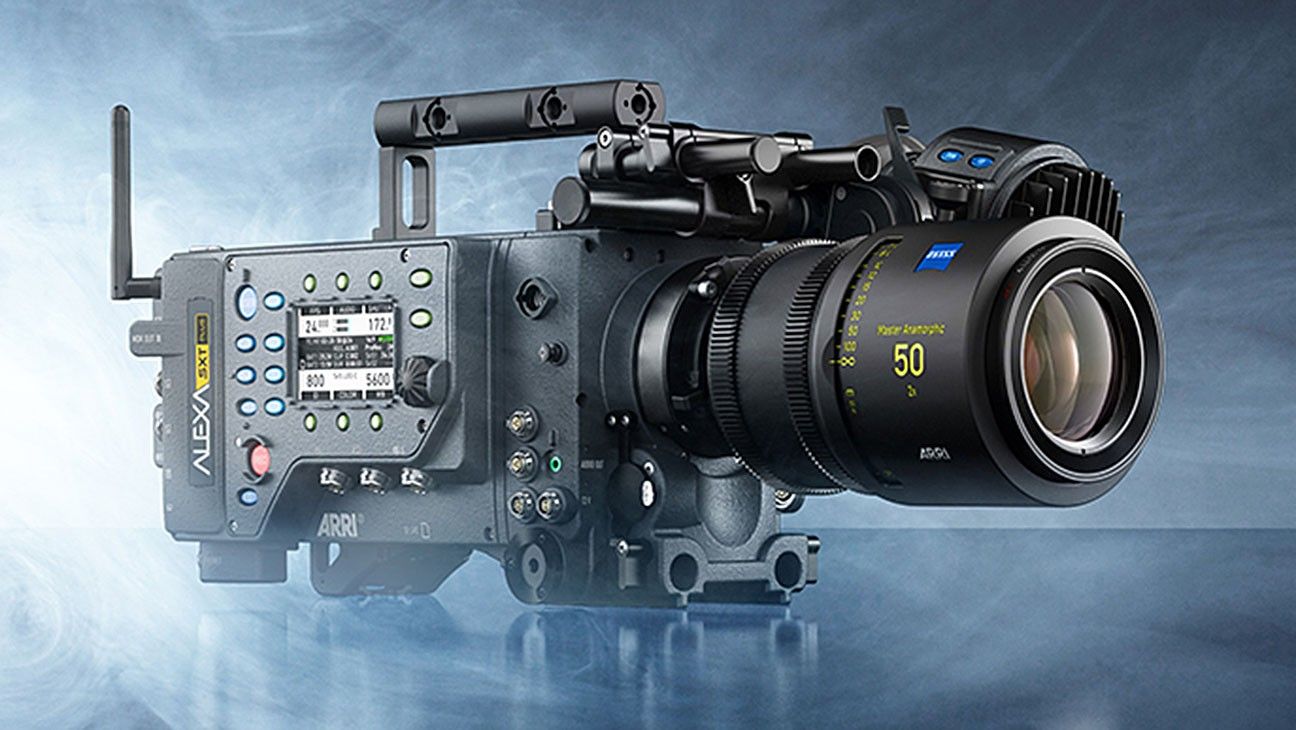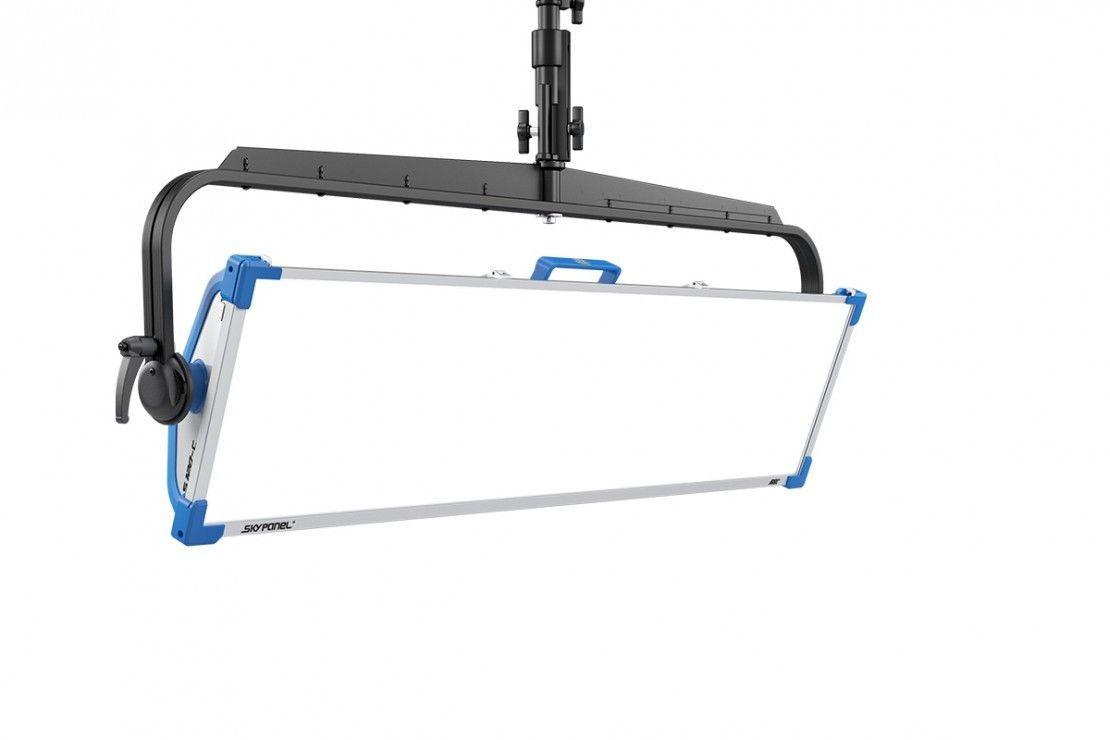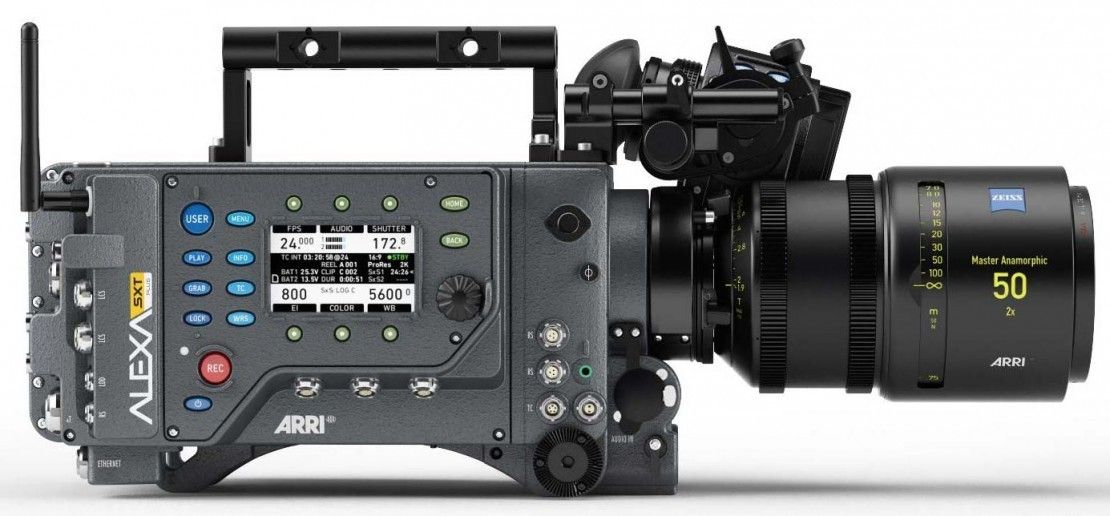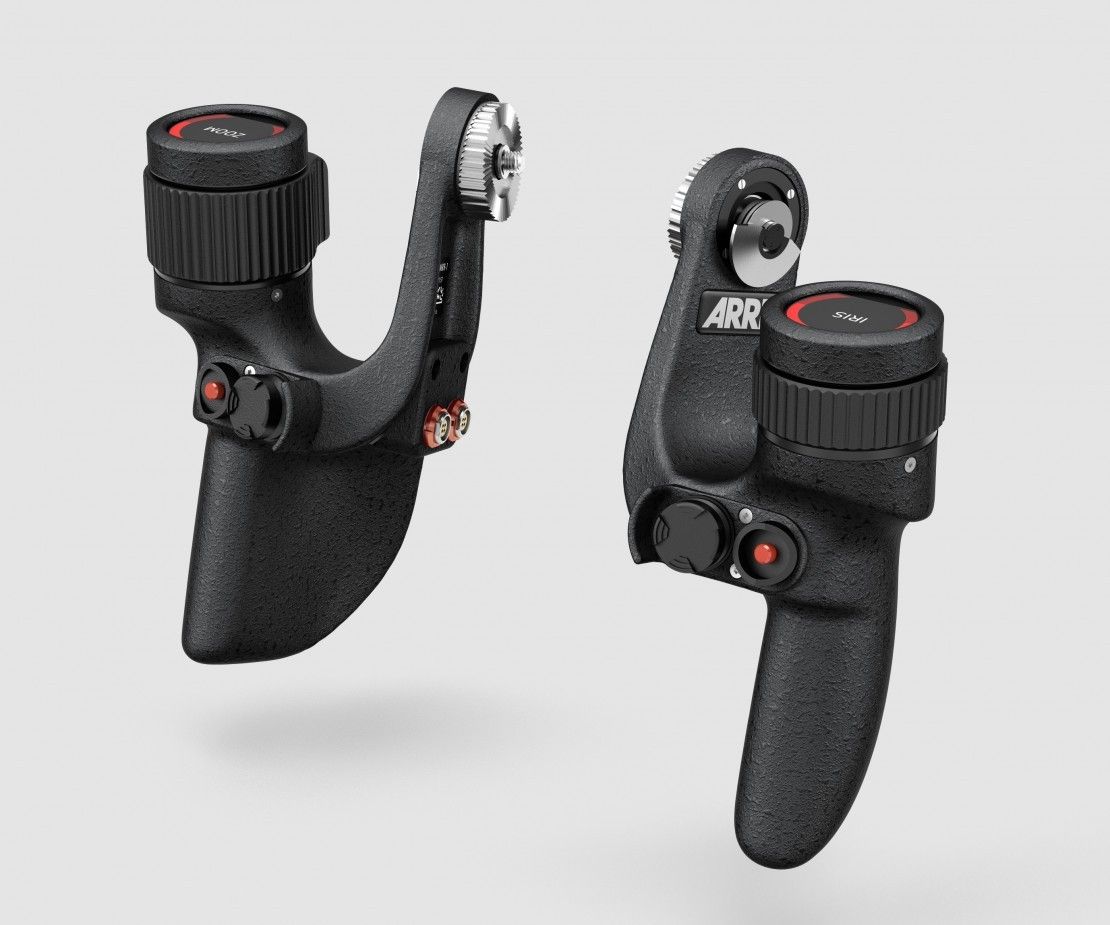
In the wake of IBC 2016, ARRI has new announcements in lighting, camera, and accessory lines.
Lights
SkyPanel LED gets a new edition with the S120-C, its biggest fixture to date. Joining the S60 and S30 family, the S120-C is twice as long as the S60 but weighs nearly the same. The S120 outputs a soft, even beam of light with an aperture of 50.8†x 11.8†(1290mm x 300mm) and consumes less than 400 watts. It is slightly brighter than the S60-C and has an efficacy of 9 lumens per watt.

ARRI claims to have completed the development of the Alexa SXT cameras (Super Xtended Technology).​​
The fully tuneable LED adjusts from 2,800 K to 10,000K with high color rendering and is dimmable from 0 – 100%. The thin profile of the S120 offers DMX control, onboard battery options, an EtherCon port for network connectivity, and a USB connection for updates. As you might imagine, ARRI has also released all the necessary accessories with the fixture: honeycombs, egg crates, barn doors, diffusion panels, and a new fabric barn door dubbed the FlexDoor.
Features
Vibrant Color Selection (RGB+W Color Gamut)
High Color Rendering
Large Aperture (1290 x 300mm)
Low Power Consumption (400 W Nominal)
Tremendous Output – Brighter than 2kW Tungsten Soft Light
Lightweight and Compact
Interchangeable Diffusion Panels
On-Board Battery Connection (23 – 36V DC)
RDM Implementation
Available in Blue/Silver and Black
Fan Mode Selection
Camera

Good news for all Alexa XT EV, XT Plus, and XT Studio camera users: ARRI claims to have completed the development of the Alexa SXT cameras (Super Xtended Technology). For those who bought the cameras in 2015 and 2016, you can now upgrade completely free of charge to SXT at seven different locations including Munich, London, Los Angeles, New York, Beijing, Hong Kong, and Mumbai. If you happened to receive your XT prior to 2015, there is a paid option to upgrade to the full SXT version.
While SXT keeps the same sensor and user interface of the original Alexa design, its capabilities have been greatly extended. It’s now equipped with better electronics and a more sophisticated image processor that aligns with the Alexa 65. The SXT cameras can also manage more recording formats (HD, 2K, 4K UHD, or 4K Cine) with 16-bit in-camera processing up to 120fps. The SXT can also record a WCG (Wide Color Gamut) with images ready for color space standards like Rec 2020.
In addition to being able to record HDR, you can now also monitor in HDR. There’s also a new media bay that can accept SxS PRO cards, SxS PRO+ cards, CFast 2.0 cards, XR capture drives, and SXR capture drives.
Accessories
As part of the ECS (Electronic Control System) line, ARRI has announced four new Master Grip handgrips to provide full control of focus, iris, and zoom settings on cine lenses, including adjustable motor speed, zoom response, and motor limits.
Based on the classic ARRIFLEX handgrips, they can be mounted on tripod pan arms or studio pedestal heads. The Master grips can be used as focus and zoom demands for multi-camera setups with camera control functions, including user button access and record start/stop for ARRI and third-party cameras.
ARRI Master Grips
Combining camera stabilization with lens and camera control, they’re available in right-side and left-side grips with either a rocker for smooth zooming or a thumb wheel for iris or focus control.

Master Grip Left Wheel MLW-1
Left-side camera handgrip
Assignable user buttons and a finger wheel for iris or focus adjustments.
Includes a steel ARRI rosette and two LBUS interfaces
Master Grip Right Wheel MRW-1
Right-side camera handgrip
Assignable user buttons and a finger wheel for iris or focus adjustments
Includes a steel ARRI rosette and two LBUS interfaces
Master Grip Left Rocker MLR-1
Left-side camera handgrip
Assignable user buttons and a control rocker for super-smooth zooming
Includes a steel ARRI rosette and two LBUS interfaces
Master Grip Right Rocker MRR-1
Right-side camera handgrip
Assignable user buttons and a control rocker for super-smooth zooming
Includes a steel ARRI rosette and two LBUS interfaces
